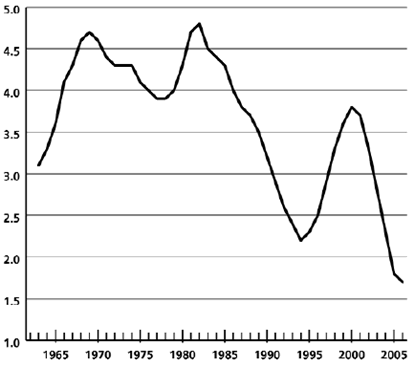(...) It was netinvestment in the private sector that was once the major driver of the capitalist economy, absorbing a growing economic surplus. It was relatively high net private non-residential fixed investment (together with military-oriented government spending) that helped to create and sustain the “Golden Age” of the 1960s. The faltering of such investment (as a percent of GDP) in the early 1970s (with brief exceptions in the late 1970s–early 1980s, and late 1990s), signaled that the economy was unable to absorb all of the investment-seeking surplus that it was generating, and thus marked the onset of deepening stagnation in the real economy of goods and services. The whole problem has gotten worse over time. Nine out of the ten years with the lowest net non-residential fixed investment as a percent of GDP over the last half century (up through 2006) were in the 1990s and 2000s. Between 1986 and 2006, in only one year—2000, just before the stock market crash—did the percent of GDP represented by net private non-residential fixed investment reach the average for 1960–79 (4.2 percent). This failure to invest is clearly not due to a lack of investment-seeking surplus. One indicator of this is that corporations are now sitting on a mountain of cash—in excess of $600 billion in corporate savings that have built up at the same time that investment has been declining due to a lack of profitable outlets. What has mainly kept things from getting worse in the last few decades as a result of the decline of net investment and limits on civilian government spending has been soaring finance. This has provided a considerable outlet for economic surplus in what is called FIRE (finance, insurance, and real estate), employing many new people in this non-productive sector of the economy, while also indirectly stimulating demand through the impact of asset appreciation (the wealth effect).


No comments:
Post a Comment